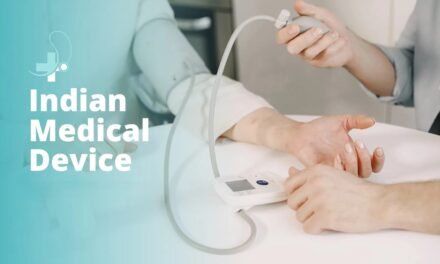
Ensuring Safety and Efficacy in India’s Medical Device Industry

India’s medical device industry is undergoing rapid growth, necessitating robust mechanisms to ensure product safety and efficacy. A comprehensive regulatory framework, quality control measures, and industry collaboration are critical to achieving these goals.
Key Strategies for Ensuring Safety and Efficacy:
1. Regulatory Framework:
- Medical Device Rules, 2017: Introduced by the Central Drugs Standard Control Organization (CDSCO), these rules classify medical devices into four categories (A, B, C, D) based on risk levels.
- Class A: Low risk (e.g., thermometers)
- Class D: High risk (e.g., cardiac stents)
- Mandatory Licensing: Devices in Classes B, C, and D require licensing, ensuring stringent regulatory oversight.
2. Standardization of Quality:
- ISO 13485 Certification: Compliance with this internationally recognized quality management system (QMS) standard is mandatory for manufacturers, ensuring consistent product quality.
- Bureau of Indian Standards (BIS): BIS has developed domestic standards aligned with global benchmarks, such as IS 23485, ensuring safety and performance.
3. Testing and Validation:
- Pre-Market Testing: Medical devices undergo rigorous clinical trials and testing in CDSCO-certified laboratories to validate safety and performance.
- Notified Bodies: Independent testing agencies assess Class A and B devices, while Class C and D devices are tested by CDSCO labs.
4. Post-Market Surveillance:
- Adverse Event Reporting: Manufacturers and healthcare providers are required to report adverse events, enabling timely corrective actions.
- Device Recalls: Mechanisms for identifying and recalling defective devices are in place to protect patient safety.
5. Adoption of Emerging Technologies:
- Artificial Intelligence (AI) and Big Data: These technologies enable real-time monitoring of device performance and predictive analysis for potential risks.
- Blockchain for Supply Chain Security: Ensures traceability and authenticity, reducing counterfeit devices.
6. Skill Development and Training:
- Capacity Building: Programs for training regulators and industry professionals on global best practices enhance the effectiveness of safety oversight.
- Collaborations with Academia: Partnerships with institutions like IITs foster innovation and ensure alignment with international safety standards.
7. Collaboration with Global Regulatory Bodies:
- International Harmonization: India’s participation in the International Medical Device Regulators Forum (IMDRF) helps align domestic regulations with global standards.
- Regulatory Approvals: Indian devices with certifications like US FDA 510(k) or CE marking demonstrate adherence to international safety and efficacy requirements.
8. Government Initiatives:
- Production Linked Incentive (PLI) Scheme: Encourages domestic manufacturing, reducing reliance on imports while maintaining stringent quality control.
- Medical Device Parks: Establishing infrastructure for R&D and manufacturing fosters innovation and ensures compliance with safety standards.
Challenges:
- Limited Testing Infrastructure: India has a limited number of certified testing laboratories, affecting timely approvals.
- Regulatory Complexity: Small and medium enterprises (SMEs) may find it challenging to navigate stringent regulatory requirements.
- Counterfeit Devices: Ensuring the authenticity of devices remains a persistent issue.
Future Directions:
- Strengthening Regulatory Oversight:
- Expand the network of certified testing laboratories.
- Increase CDSCO’s capacity with advanced training and resources.
- Promoting Innovation:
- Support R&D for emerging technologies like 3D printing and nanotechnology.
- Facilitate public-private partnerships for device innovation.
- Global Competitiveness:
- Enhance alignment with international regulatory standards to boost exports.
- Encourage domestic manufacturers to seek global certifications.




























